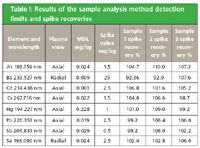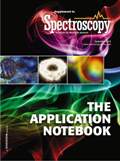Analysis of Migratory Elements in Toy Samples Using the Thermo Scientific iCAP 6200 ICP
Application Notebook
The analysis of toy samples for toxic trace elements has been undertaken for many years. However, a number of recent cases of toys contaminated with heavy metals has attracted global media attention. This has resulted in an increase in the number of toy manufacturers performing their own 'in-house' testing. This 'in-house' testing is not only to ensure regulatory compliance; it is also proving significantly more cost effective than outsourcing the analysis.
Matthew Cassap, Applications Specialist, Thermo Fisher Scientific, Cambridge, UK
The analysis of toy samples for toxic trace elements has been undertaken for many years. However, a number of recent cases of toys contaminated with heavy metals has attracted global media attention. This has resulted in an increase in the number of toy manufacturers performing their own 'in-house' testing. This 'in-house' testing is not only to ensure regulatory compliance; it is also proving significantly more cost effective than outsourcing the analysis.
Instrumentation
A Thermo Scientific iCAP 6200 ICP was used in the analysis of migratory elements in toy samples. This dual view compact ICP instrument achieves powerful analyte detection and provides a cost-effective solution for the routine analysis of liquids in laboratories with standard sample throughput requirements.
Sample and Standard Preparation
Three toy samples were analyzed from a small toy car and a baby rattle. These were sampled as follows:
- Orange unpainted rubber body of a toy car (sample 1)
- Unpainted blue wheels of a toy car (sample 2)
- Sections of yellow plastic from a baby rattle (sample 3).
All of the samples were prepared in accordance with ASTM F963-08 and EN71 Part 3 (as follows). A portion of the sample (a minimum of 0.1 g) was immersed in 0.07 mol/L hydrochloric acid (50 times the mass of the sample) and agitated in the dark at 37 °C for one hour, followed by one hour in the dark at 37 °C without agitation. All solid material was removed from the sample by filtration using the membrane filter. The remaining filtrate was analyzed immediately. A spike of each of the samples was also prepared to check recovery in the matrix; this was added to the relevant sample prior to agitation. Standards were prepared by diluting 1000 mg/kg aqueous single element standards, and were prepared to contain 0.07 mol/L hydrochloric acid.
Method Development
The EN71 Toy Analysis method template was opened in Thermo Scientific iTEVA Software. The standard sample introduction kit was chosen for the analysis — as recommended by the template. The instrument was calibrated and samples analyzed in a single run. Analysis parameters used for the analysis were those present in the method template.
Results
The results of the analysis are shown in Table I. This table also notes the plasma view with which each wavelength was analyzed. A method detection limit (MDL) study was carried out by analyzing a 10 replicate, acid-matched blank. The standard deviation of the 10 replicates was multiplied by 3 to determine the method detection limit. Of the samples analyzed, all of the toxic elements were below the detection limit. A literature search was performed and this was found to be common and is indicative of the high level 'Good Manufacturing Practice' (GMP) adhered to by the toy manufacturing industry. The spike recoveries were all within acceptable limits (within 10% of the prepared values).

Table I: Results of the sample analysis method detection limits and spike recoveries
Conclusions
The analysis of migratory elements from toys using the iCAP 6200 ICP was made easy by the use of the method template within the Thermo Scientific iTEVA Software. The use of a pre-loaded method template with the iCAP 6200 provided a total solution for regulatory compliant toy analysis. These tools enable both novice and experienced analysts to achieve excellent results with minimal requirements for method development.

Thermo Fisher Scientific
SOLAAR House, 19 Mercers Row, Cambridge CB5 8BZ, UK
(800) 532-4752; E-mail: matthew.cassap@thermofisher.com
Website: www.thermo.com/icap

Thermo Fisher Scientists Highlight the Latest Advances in Process Monitoring with Raman Spectroscopy
April 1st 2025In this exclusive Spectroscopy interview, John Richmond and Tom Dearing of Thermo Fisher Scientific discuss the company’s Raman technology and the latest trends for process monitoring across various applications.
A Seamless Trace Elemental Analysis Prescription for Quality Pharmaceuticals
March 31st 2025Quality assurance and quality control (QA/QC) are essential in pharmaceutical manufacturing to ensure compliance with standards like United States Pharmacopoeia <232> and ICH Q3D, as well as FDA regulations. Reliable and user-friendly testing solutions help QA/QC labs deliver precise trace elemental analyses while meeting throughput demands and data security requirements.